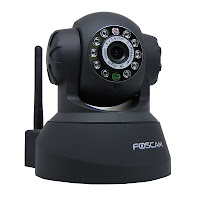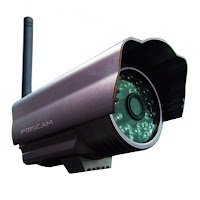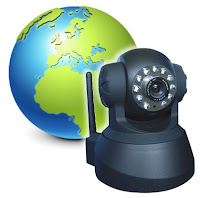I've been told about a new firmware for FI8904W and received a copy of it (Thanks Neil!). At the same time I also received the corresponding update for the FI8908W from Foscam as I was asking for news on the unfinished FPS parameter introduced in the version 11.14.1.46 still present on Foscam download center.
As always, don't use these firmwares if you have any reason to suspect that your camera is not from Foscam.
Other look-alike cameras such as Maygion, EyeSight and EasyNP will be bricked by Foscam firmware and require updates from their respective manufacturer.
The changes are:
- Wifi disconnections resolved
- Wrong timestamp in log resolved
- Log now reports motion detection events
- Videostream FPS can now be adjusted (see updated videostream command below). You will find this handy to control the bandwidth used by your IP cameras.
- You can Backup/Restore your camera settings
Not fixed: The errors introduced in the tilt function are still present.
An updated WebUI 2.4.8.14 file fixes the PTZ bugs above, I've updated the archive with it. Big thanks to Paillassou!
Another remark on PTZ: you will notice that they've turned the turbo on in that version, the PTZ patrol rate is set to the maximum (0). With the bug above, it's nearly impossible to set the camera in the right position. You may then want to change this speed back to normal with the following command:
http://[ipcam]/set_misc.cgi?ptz_patrol_rate = 20
I suggest that you also send this other command:
 http:/
http:// [ipcam]/set_misc.cgi?ptz_center_onstart=0
This will prevent the camera from rotating on reboot. You won't need to re-position the camera each time.
Click on your model to download:
FI8908W
system firmware 11.14.2.17
web ui firmware 2.4.8.14
 FI8904W (also FI8903W)
FI8904W (also FI8903W)
system firmware 11.15.2.17
web ui firmware 2.4.9.14
The included IP Camera Tool needs to be updated to 7.2.34 as per instructions.
Last minute: While I didn't encounter problems myself, some users had troubles with this version IP Camera Tool.
If it's your case, please try the newer version 7.5.32. (Thanks to Paco for the heads up)
/videostream.cgi[?user=&pwd=&resolution=&rate=]
/videostream.asf[?user=&pwd=&resolution=&rate=]
Parameters:
resolution:(8:320*240,32:640*480)
rate: 0-23
0:maximum
1:20 fps
3:15 fps
6:10 fps
11:5 fps
12:4 fps
13:3 fps
14:2 fps
15:1 fps
17:1 fp/2s
19:1 fp/3s
21:1 fp/4s
23:1 fp/5s
Read More
As always, don't use these firmwares if you have any reason to suspect that your camera is not from Foscam.
Other look-alike cameras such as Maygion, EyeSight and EasyNP will be bricked by Foscam firmware and require updates from their respective manufacturer.
The changes are:
- Wifi disconnections resolved
- Wrong timestamp in log resolved
- Log now reports motion detection events
- Videostream FPS can now be adjusted (see updated videostream command below). You will find this handy to control the bandwidth used by your IP cameras.
- You can Backup/Restore your camera settings
An updated WebUI 2.4.8.14 file fixes the PTZ bugs above, I've updated the archive with it. Big thanks to Paillassou!
Another remark on PTZ: you will notice that they've turned the turbo on in that version, the PTZ patrol rate is set to the maximum (0). With the bug above, it's nearly impossible to set the camera in the right position. You may then want to change this speed back to normal with the following command:
http://[ipcam]/
I suggest that you also send this other command:
 http:/
http:/Click on your model to download:
FI8908W
system firmware 11.14.2.17
web ui firmware 2.4.8.14
 FI8904W (also FI8903W)
FI8904W (also FI8903W)system firmware 11.15.2.17
web ui firmware 2.4.9.14
The included IP Camera Tool needs to be updated to 7.2.34 as per instructions.
Last minute: While I didn't encounter problems myself, some users had troubles with this version IP Camera Tool.
If it's your case, please try the newer version 7.5.32. (Thanks to Paco for the heads up)
/videostream.cgi[?user=&pwd=&resolution=&rate=]
/videostream.asf[?user=&pwd=&resolution=&rate=]
Parameters:
resolution:(8:320*240,32:640*480)
rate: 0-23
0:maximum
1:20 fps
3:15 fps
6:10 fps
11:5 fps
12:4 fps
13:3 fps
14:2 fps
15:1 fps
17:1 fp/2s
19:1 fp/3s
21:1 fp/4s
23:1 fp/5s









